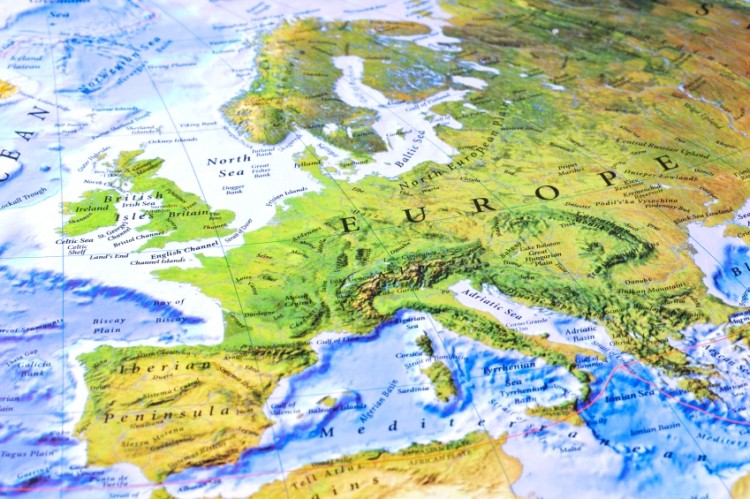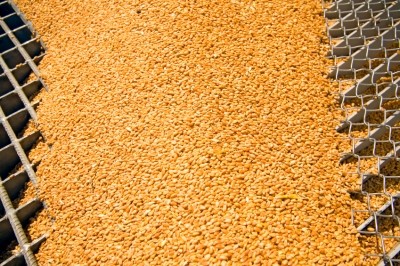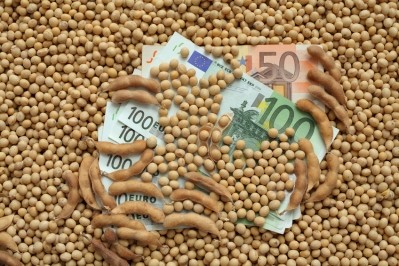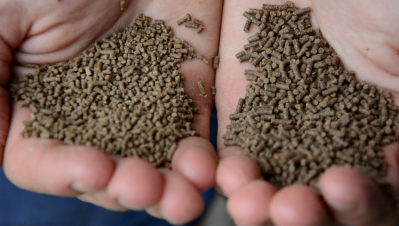EU strategic feed material supply, lower FCR and GM trace detection limits high on FEFAC's agenda

In the report, Feed Chain in Action, which followed the AGM of the feed trade group earlier this month, the lobbyists are again calling on EU policy makers to act to secure the future supply of proteins for the EU livestock sector.
EU protein balance sheet
And the body urges legislators to rethink indigenous supply, in terms of the EU protein balance sheet, by acknowledging the contributions of cereals and forages grown in Europe which “would make the often quoted 70% protein deficit an incorrect interpretation of the factual situation.”
As maize, wheat and barley generally contain around 10% protein, said the FEFAC report, a rough calculation would show they provide around 14 million tons of protein equivalent annually - almost as much as that nutrient provided by soy imports.
“This illustrates that a more comprehensive and detailed EU protein balance sheet is needed to measure the potential impacts of Common Agricultural Policy (CAP) reform measures which aim to increase supply of EU produced protein rich feed materials.
In any case, further initiatives are needed to actively reduce the dependency on imports for strategic reasons," said the report.
The continuing worldwide trend to cultivate more genetically modified crops, making non-GM crops ever scarcer and thus more expensive is another feed security topic of concern for the EU feed lobby group.
“It is of great importance that the EU strategic feed material supply is taken into account during the current round of negotiations on free trade agreements,” said FEFAC.
Reduction of feed conversion rates
The policy review also highlights the reduction of feed conversion rates (FCR) as one of the most significant success stories of the EU feed market and is, said FEFAC, a “key indicator for resource efficiency” in the sector.
The report shows that, over the past 30 years, the FCRs have on average been reduced by 30% to hit around the 1.2:1 level for farmed fish feed, 1.8:1 for poultry feed and 2.5:1 for pig feed.
When asked how the EU feed industry will further lower FCR, a spokesperson for FEFAC told us a renewed focus on feeding strategies aimed at improving the gut health of livestock will allow more efficient uptake of nutrients, while optimizing animal health and the intake of feedstuffs.
“By supplying nutrients more efficiently, through precision feeding, for example, more attention is given to the exact needs of an individual farm animal at a certain life stage, and less nutrients go to waste.
Through further insight into animal nutrition and improved knowledge transfer, significant progress may be achieved in the middle term to narrow up the gap between the worst and the best performing farms as regards resource efficiency,” he said.
Nitrogen and phosphorous intake goals
Another goal of the EU feed sector is to achieve a 30% reduction in the intake of nitrogen and phosphorous by 2030.
Using phytases to increase phosphorous bioavailability, combined with amino acids, enables a reduction in the quantities of phosphorous and nitrogen in livestock diets and thus a reduction in excretion levels, respectively, said the FEFAC representative.
“According to feed companies, over the last 20 years of phytase use in feed, the matrix values for phytases of > 0.1% available phosphorus saves more than 7kg of di-calcium phosphate per ton of feed.
Given this progress made over the last decades, the feed industry has set a 2030 target of 30% reduction for nitrogen and phosphorus N and P ingestion, as well as a 40% reduction of nitrogen and phosphorus excretions," said the spokesperson.
GM trace detection limits
He said that the EU needs to develop a true low level GM presence policy based on global Codex guidelines for crop imports to avoid future serious market disruptions for the EU feed and food chain in the face of the fast expanding global GM pipeline.
With the rapid development of new GM maize traits in the US, imports of US corn gluten feed and DDGS have drastically decreased because the risk of an imported shipment containing traces of non-authorized GM crops is too high, added the spokesperson.
“The 0.1% technical level agreed by the EU in 2011 needs to be reviewed. While it provides some more legal certainty, it is not a long-term solution for operators,” he said.
The technical level reflects the detection limit validated by EURL-GMFF for official testing methods for GM crops that have already received a positive EFSA risk assessment but are still awaiting the formal Commission approval.
Processed animal protein (PAP)
In terms of when the EU Commission (EC) might approve processed animal protein (PAP) in feed for pigs and poultry, the FEFAC spokesperson said the EC is currently actively evaluating the consequences of the re-authorization of non-ruminant PAP in fish feed.
"The next step would be poultry PAP in pig feed, it gave 2015 as the target year. Then pig PAP in poultry feed may follow in 2016, depending on where there is validation of a species specific PCR method of analysis," he added.











